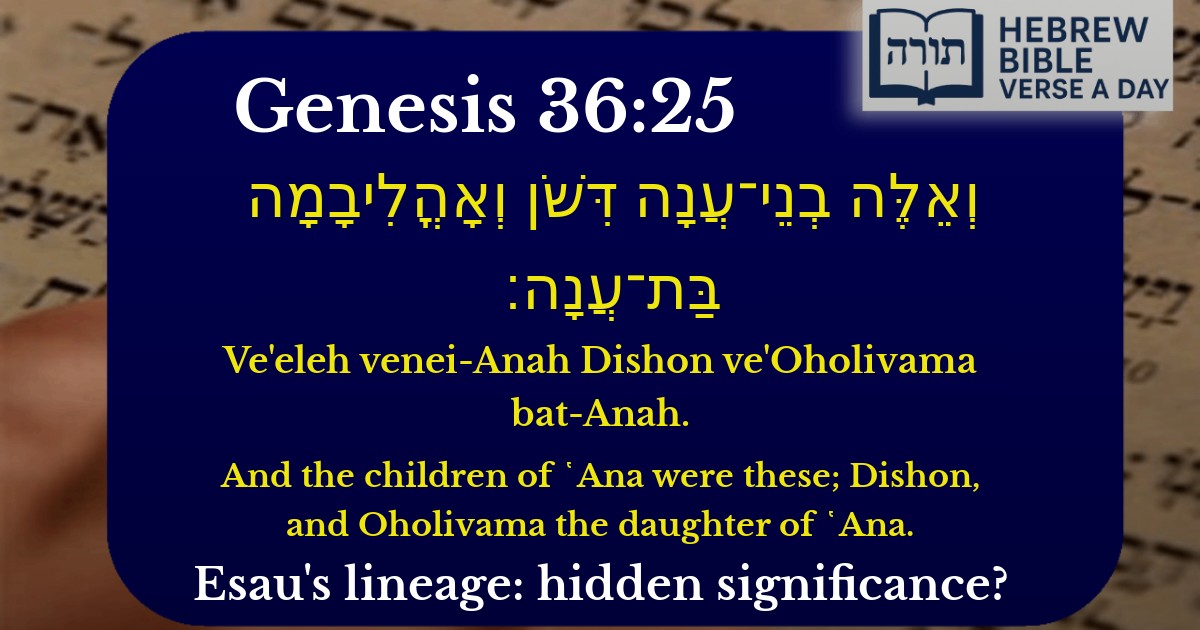Join Our Newsletter To Be Informed When New Videos Are Posted
Join the thousands of fellow Studends who rely on our videos to learn how to read the bible in Hebrew for free!
Hebrew Text
וְאֵלֶּה בְנֵי־עֲנָה דִּשֹׁן וְאָהֳלִיבָמָה בַּת־עֲנָה׃
English Translation
And the children of ῾Ana were these; Dishon, and Oholivama the daughter of ῾Ana.
Transliteration
Ve'eleh venei-Anah Dishon ve'Oholivama bat-Anah.
Hebrew Leining Text
וְאֵ֥לֶּה בְנֵֽי־עֲנָ֖ה דִּשֹׁ֑ן וְאׇהֳלִיבָמָ֖ה בַּת־עֲנָֽה׃


Context in Sefer Bereishit
The verse (Bereishit 36:25) lists the descendants of Seir the Horite, focusing on the lineage of Anah. This passage appears in the genealogy of Esav (Esau), detailing the families and clans of the land of Edom before Bnei Yisrael's emergence.
Rashi's Commentary
Rashi (Rabbi Shlomo Yitzchaki) notes that Anah is the same individual mentioned earlier (Bereishit 36:2) as the father of Oholivama, one of Esav's wives. Rashi clarifies that Anah was the son of Tzivon (Bereishit 36:24), making Oholivama both the daughter and granddaughter of Anah (since Tzivon was also called Anah in some interpretations). This reflects a common Torah practice of referring to grandchildren as "children."
Ibn Ezra's Insight
Ibn Ezra emphasizes that the repetition of Anah's name underscores his significance in Edomite lineage. The mention of Oholivama as "bat-Anah" (daughter of Anah) highlights her distinguished status, as she later became a wife of Esav, linking her directly to the leadership of Edom.
Midrashic Interpretation
The Midrash (Bereishit Rabbah 82:14) connects Anah's name (עֲנָה) to the root "to answer" (ענה), suggesting he was a figure of prominence who "answered" or led his generation. Dishon, his son, is interpreted as having a name meaning "antelope" (דישון), symbolizing swiftness or agility, possibly alluding to traits valued in Edomite society.
Halachic and Historical Significance